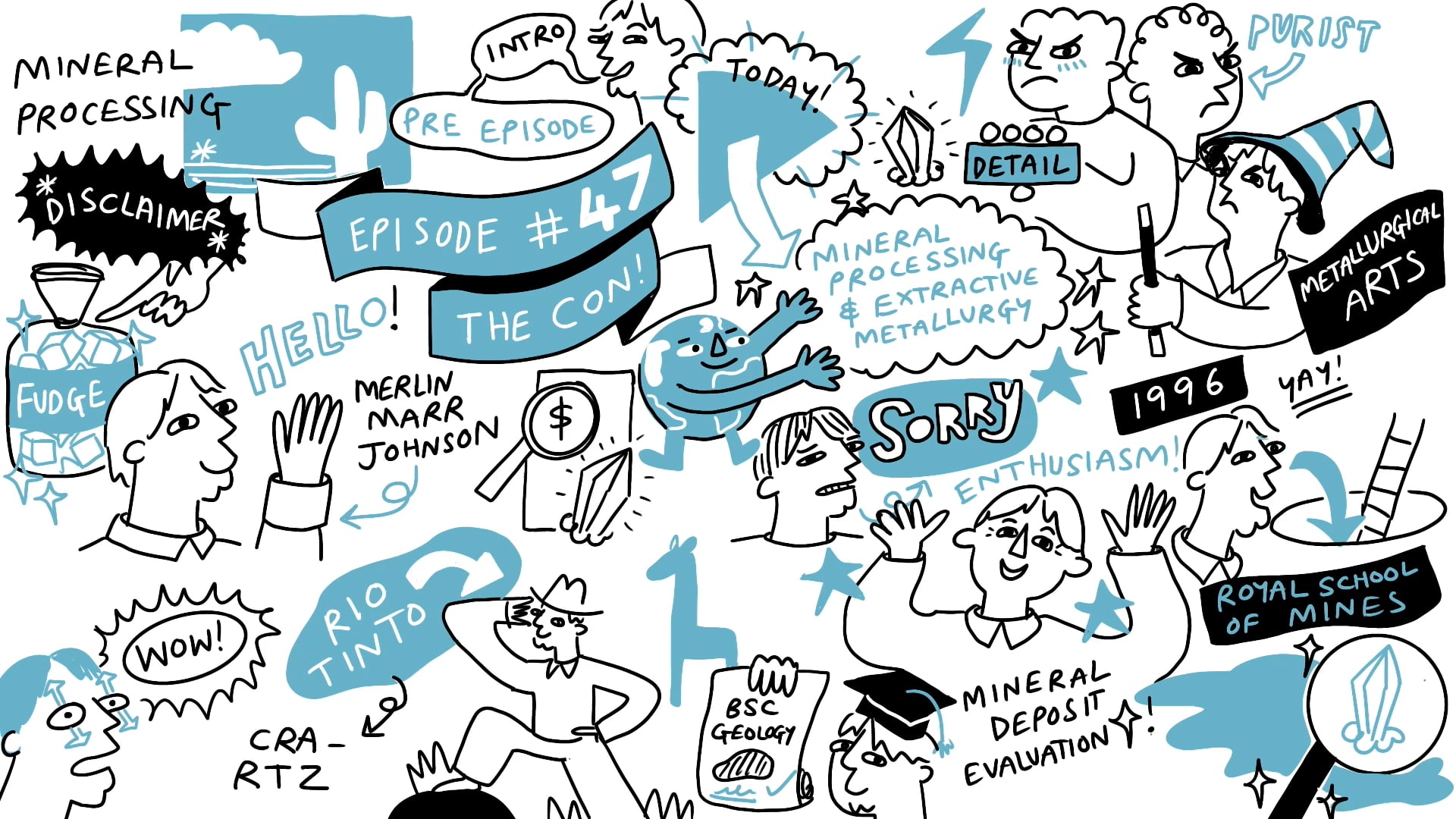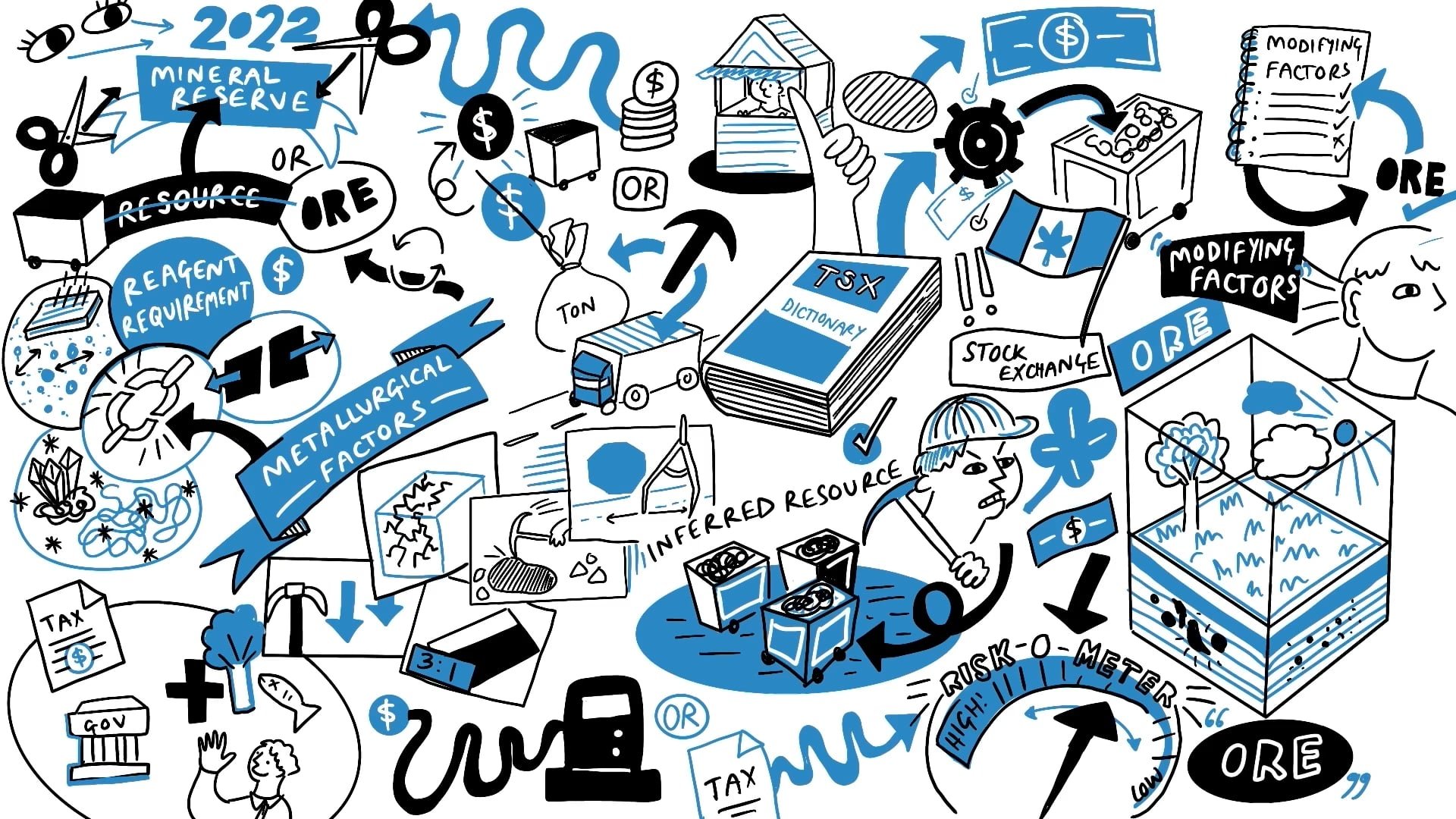Mineral processing: Types of rock

More episodes
Transcript
Hello, and welcome to another episode of the Con. Today I'm going to be talking about mineral processing and extractive metallurgy. When one talks about the con, this is it. This is the point where you get the ore and you turn it into a concentrate. Now, today, it's a massive, massive topic, I find it one of the most interesting and amazing things that we do in the mining sector. It's an art and a science. When I first studied it, I was doing a Master's in mineral deposit evaluation and all that kind of stuff, how to get things out of the ground. This one course was like, oh, my goodness, really, this is how you do it. So, what is mineral processing, and what are we trying to do? We're trying to get metal out of the ground. Many mines around the world don't actually get to the metal stage, they produce a concentrate, which then has to be rich enough in the metal of value, that you can transport it a long distance, and then you take it to a place where it gets further processed. There are also lots of mines around the world where they produce the metal on site and that metal then has to be transported to the end user, or possibly to further refining. But all processes start with a rock in the ground. And what you're really trying to do is you're trying to separate commercially valuable minerals from other rocks.
So, what is a rock? let's just start with that. A rock is an aggregate of minerals, which are all mushed together or held together or bound together, and we determine a rock as ore when some of those minerals in the aggregate have got commercial value and we know that we can extract that value mineral at a profit. Because if you can't do it in a profit and extract it, and that includes the mining, then it's not all. So, in your aggregate of minerals in your rock, let's call it all let's assume that we're going to be able to make money out of this, you've got some particles, which you want and other particles, you don't. You've got waste, and you've got value. Now what you have to do is you have to separate those grains, well, first of all, you've got to break them apart. So, it's a relatively simple process, you do size reduction, and then you have to liberate the grains, you have to liberate the value grain from the non-value grain. And then what you'll have is a fine mix of value minerals with non-value minerals. And at that point, you have to then separate it. You have to get the value minerals to one side and the non-value minerals to another side. And what you'll often get at that point is a concentrate and you'll get some waste products which can include what normally includes tailings.
There's a vast amount of complexity that one can go into but essentially comminution is the process of size reduction and that can be split into 2 phases, one of which is crushing and the second is grinding and that is incredibly energy intensive. Now, when you are looking at a new investment possibility or looking at a process, you're going to want to understand how hard the rock is and how much crushing it's going to need. People will often talk about, oh, this is free dig or this is an oxide, what does it actually mean? Typically, an oxide can be a softer rock, so you don't need to blast it, it might be free digging, you can just go in there with a big digger and rip and take that off. And sometimes it doesn't need a lot of grinding or crushing. So on a hard rock mine typically the Sulphide are fresh rocks, they haven't been weathered, they're much more competent, particularly if they've been flooded with Silica, you can have these incredibly hard kind of bound rocks, they can be almost welded together with heat. There's a rock called the Hornfels, which is often found in skarns, which is a mixture of kind of next to igneous rocks, where there's lots of water circulating. And you can have them mineralized as well, but they can be just incredibly hard. So your hardness is going to influence how much crushing you need and that is going to influence how much energy is going to be acquired and also how much corrosion is going to be in your part and so that can be an important factor. You do want to understand what you are crushing and how hard it is because not every mineral processing operation is going to be dealing with the complete separation or the liberation. Of course, you do have some dimension stones like Granite or Marbles, which you're trying to get out of blocks. But I'm really just focusing on the metals here. I mean, I'm going to run into trouble as well because you've also got other brand of mined material that contains useful minerals, such as Diamonds or Gemstones, or perhaps Baryte or Chromite where the concentrations are high, but the value is low. So they're kind of the mineral themselves as approaching a kind of a chemical grade and typically these are kind of industrial minerals.










































.jpg)
.jpg)
.jpg)
.jpg)














